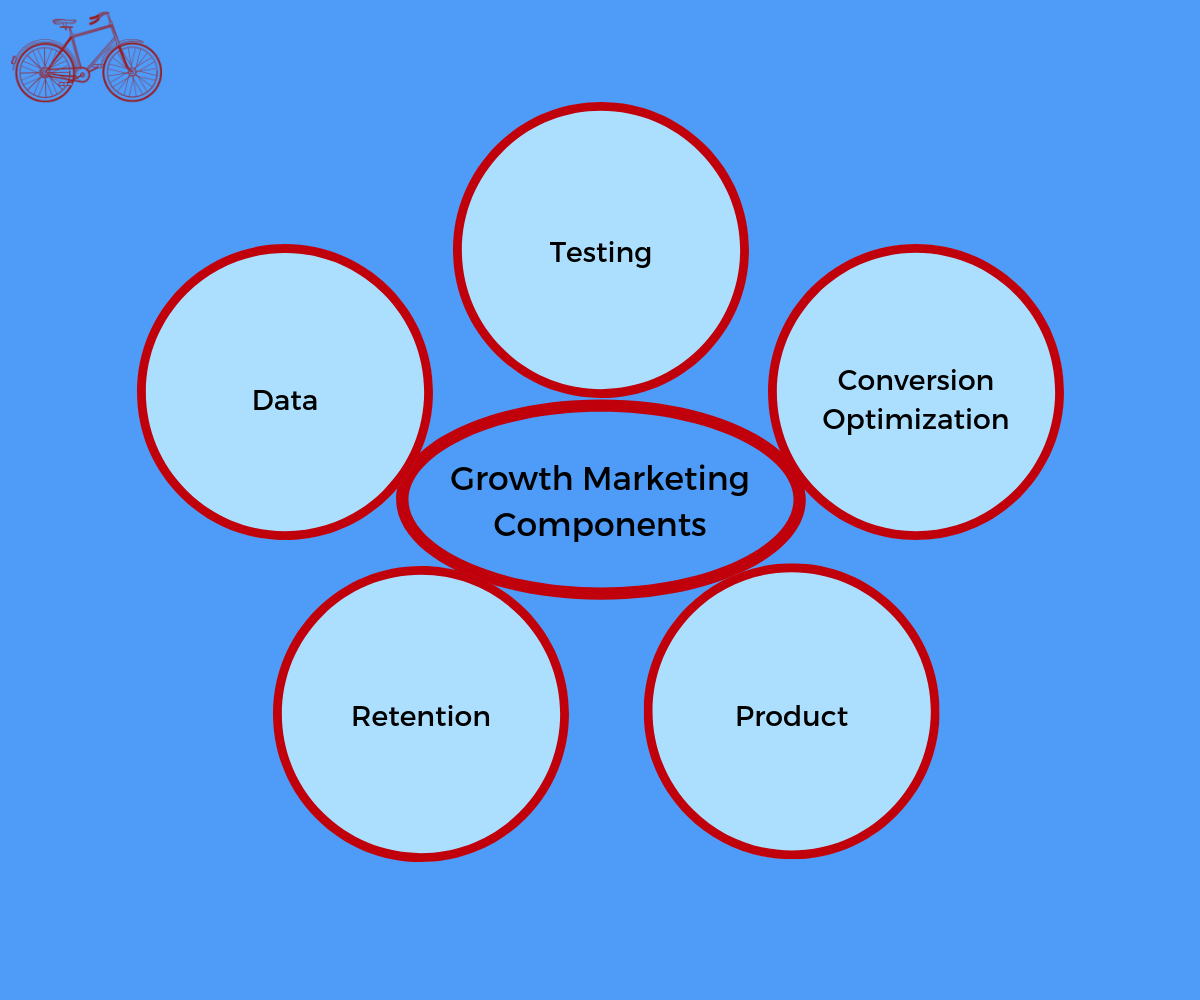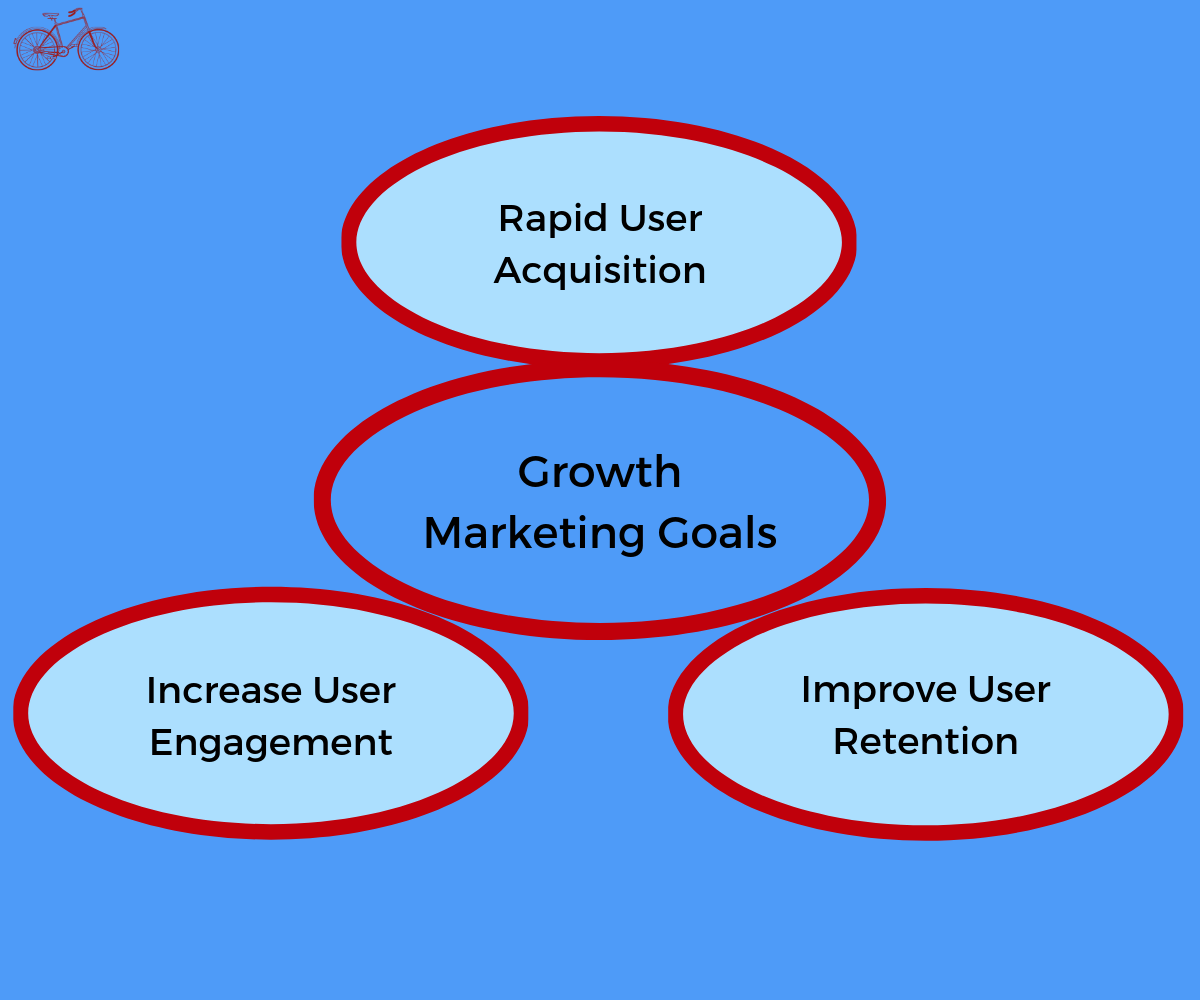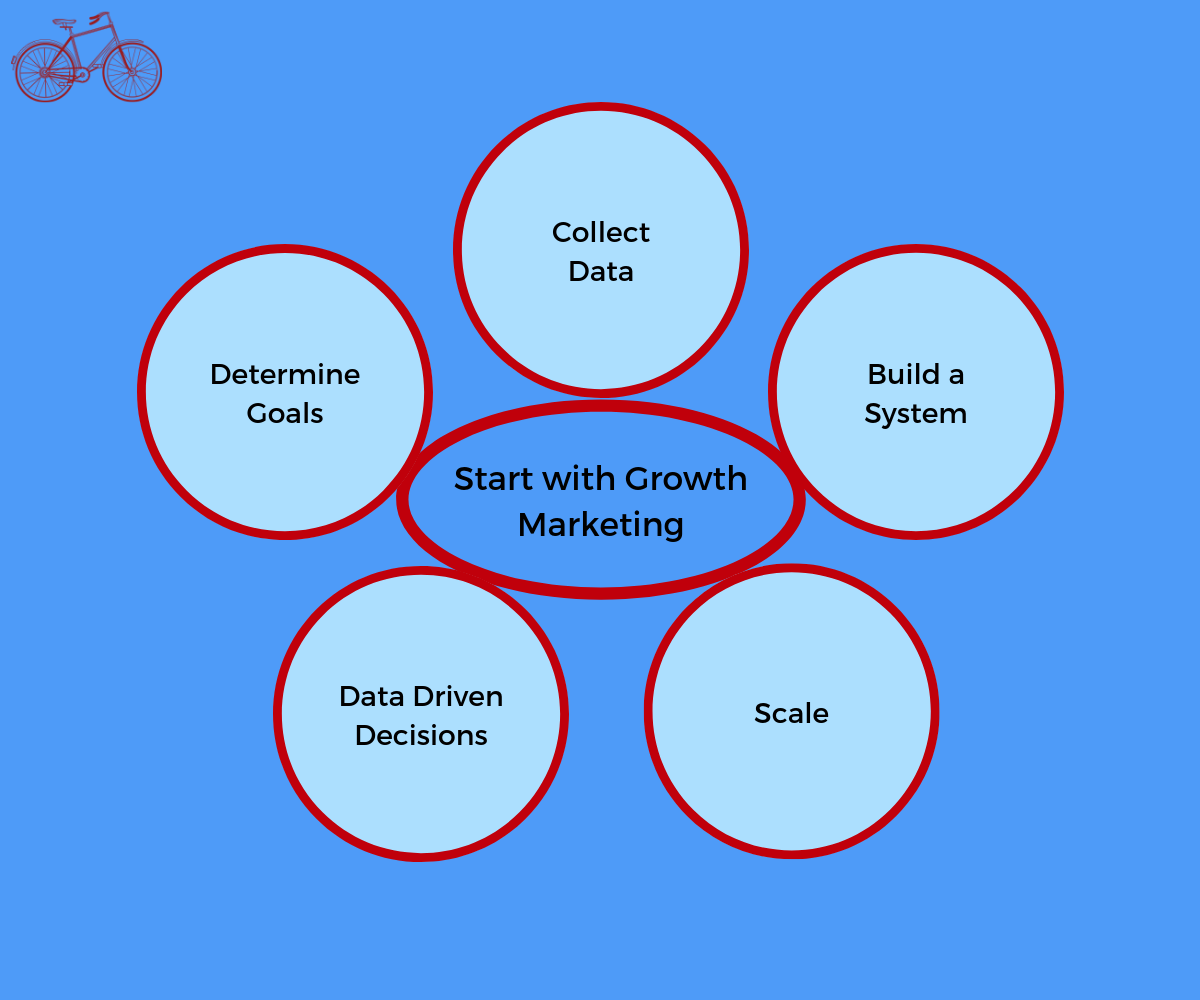Rapid user growth. Hockey stick graphs. Growth is what we are after in marketing. Whether steady growth for a mature product or explosive growth for a new product launch, we want growth.
For those that are looking to unlock explosive growth, the concept of growth marketing is worth consideration. This is a full funnel look at marketing. Looking for growth opportunities at any stage.
Here, we are going to discuss the concept of growth marketing and some considerations to get started.
What is Growth Marketing?
Growth marketing is a marketing function that focuses on the entire customer acquisition funnel to acquire, convert, and retain more engaged customers. It’s different in the sense that it focuses on the entire funnel.
Growth marketing is about collecting, mining, and using data across the entire funnel. Then, making data driven decisions about customer acquisition, customer retention, and product in order to accelerate growth across sales and marketing.
Suited particularly well for early stage and growing companies, it is a concept to help build systems to sustainably generate high growth over long periods of time.
What is Growth Hacking?
Growth hacking, which is different than growth marketing, is the short-term tactics growth marketers use in the growth marketing framework.
As the original growth hacker, Sean Ellis, states: “A growth hacker is a person whose true north is growth.”
That being said, growth hacking is the quick wins you can use to achieve growth. These are things like changing call to action text. Or, using different email subject lines. All of which are small wins in the larger context of the marketing funnel. But, these are important tactics, hacks, and findings that can generate growth.
Growth hacking plays an important role in growth marketing, but it is a slightly different concept. It still deserves consideration and application, in the growth marketing framework. Which, is why we need to discuss it here.
Growth Marketing Components
Growth marketing requires a marketer that can look at the entire marketing funnel. Then, use various concepts, tools, and processes to optimize each stage of the funnel. This is the optimization that leads to growth.
Growth marketing has key components where a marketer should focus their attention. Some of the key growth marketing components are the following.

Data
The foundation of all growth marketing activities and decisions should lie within data. Thus, creating a system that generates data and processes the data in such a way that you can analyze it is crucial.
Data collection is a process in itself. So, a team first needs to set the foundation for the collection and use of data prior to implementing major growth marketing decisions.
A growth marketer needs to use the data to make decisions that contribute to growth.
Testing
The next component of growth marketing is testing. First and foremost, testing is a mindset. In growth, everything needs to be tested. That means, for each process release, almost double the work needs to be done. Reason being that two versions of everything need to be created.
Testing comes in the form of A/B testing. Creating hypotheses to challenge all current processes. In a constant testing environment, nothing is sacred. Meaning, everything can and should be challenged and tested.
Conversion Optimization
The next facet of growth marketing is conversion optimization. Conversion optimization is looking at all the conversion points within our marketing funnel, assessing the current conversion rates, then optimizing each point.
As growth marketing looks at overall growth, addressing each stage of the funnel individually helps to build a process that addresses growth. Conversion optimization has a foundation in testing. It is all about driving growth.
Retention
As growth marketing is about growing our customer base and revenue, retaining the customers that convert is highly important. Retaining customers helps to build the user base, as we do not lose a customer every time a new one comes in.
Retention can use the data we are collecting to determine the correct customer touch points and to create highly relevant messages. All of this to increase retention and customer loyalty.
Product
Another area growth marketing addresses is the product itself. Here, we use all our growth marketing tools to create a product that customers cannot help but use. This is creating the product “stickiness”, which is crucial in retention.
The more customers use the product, the more likely they are to continue using it. The more the product is used, and the more processes the product controls, the higher value the product has in the customers day-to-day operations. Growth marketing helps to address this area.
These are some of the components of growth marketing. Each has their own needs and each works in conjunction to improve company growth, sales, and revenue.
Growth Marketing Goals
Like all areas of business, we need to address our goals. When looking at growth, this is no different. Our goals will help us determine where to focus our strategies.
Typically, there are three high-level goals we want to look at when implementing growth marketing. The following are three key goals.

Rapid User Acquisition
Rapid user acquisition is a common use case for growth marketing initiatives. It looks at needing to create campaigns that spread and focus on the top of the funnel. This can be in the form viral campaigns or effective referral programs like the famous Harry’s and Dropbox examples.
It requires a focus entirely at the top of the funnel, which can mean conversion at other parts of the funnel are affected. This goal is all about the number of people you can attract to your company or product.
Increase User Engagement
Focusing on increasing user engagement is another key goal of growth marketing. User engagement can be a key driver of growth. Especially if you have just gone through a large customer acquisition campaign, getting users to use and engage with your product is the next critical step to capitalize on your success.
User engagement is the product stickiness factor that is built into the product itself.
Improve User Retention
Building campaigns and programs to increase user retention is the next area of growth marketing. The value of customers continuing to use your product is huge. This can be subsequent purchases or increasing the average life of a user with your product.
Retention is arguably one of the biggest growth trends and discussions in marketing.
Understanding your marketing goals and what you would like to get out of growth marketing initiatives can set the expectations for any campaigns. Also, what you are trying to accomplish should always be the first step in discussing an initiative.
Getting Started with Growth Marketing
Now that we have looked at the various components and goals, it’s time to see what we need in order to get started. There are five key items to address in order to setup a growth marketing framework. The following are the five areas.

Determine Goals
The first step in beginning with any marketing initiative is establishing the goals. This is no different for growth.
First, determine your business goals. Then, the initiative, system, tools, and implementation of these goals follows. To get started, determine your growth goals and then move to the subsequent steps.
Collect Data
The next area to address is a system for data collection. This is not exclusive to collecting information on your users. It is more about collecting information on the use of your products. Also, you want to collect information on your customer acquisition process. This is your lead funnels.
This data collection framework will allow you to analyze your effectiveness and focus on areas of improvement. Then, make data driven decisions.
Build a System
The next area to address is to build a system. This is about setting up a process to consistently run growth marketing initiatives. We do not want to do a one-off campaign. We want to create a reliable system that we can iterate on.
A system allows us to be consistent about our initiatives. This consistency is one driver of the results we want.
Make Data Driven Decisions
Once we have our goals, data, and system, we can then begin to make decisions. These decisions will be based on the data we are collecting. Also, we can determine if our systems are working.
This is a key piece of growth marketing, as we want to see what is and is not working. Then, adjust as necessary.
Scale
The last area to address, after we have figured out what works, is to scale our system. This is where we fuel our growth. Creating a reliable system that generates predictable results.
To begin with growth marketing, these are five principles to address and work through. Once we lay the foundation in these areas, we can begin to test growth initiatives, as well as try new ones. But, we should always begin with the principles and processes.
Growth marketing is a key marketing concept. Depending on the stage of your company or product, it can be more or less important. With this overview, you can begin to determine whether this area of marketing is right for your business.
